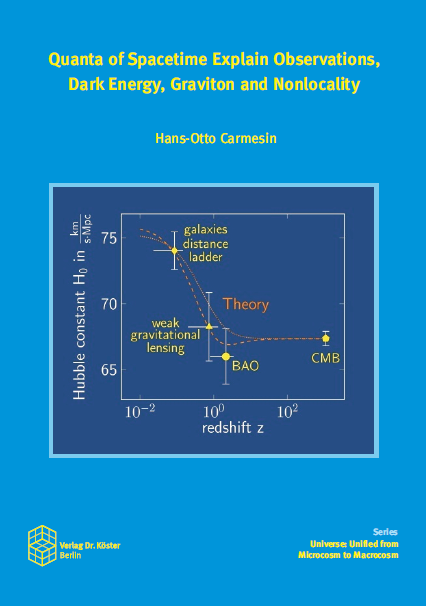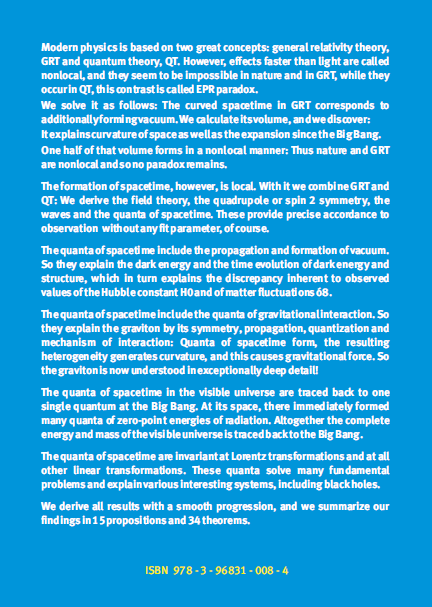Modern physics is based on two great concepts: general relativity theory, GRT and quantum theory, QT. However, effects faster than light are called nonlocal, and they seem to be impossible in nature and in GRT, while they occur in QT, this contrast is called EPR paradox.
We solve it as follows: The curved spacetime in GRT corresponds to additionally forming vacuum. We calculate its volume, and we discover:
It explains curvature of space as well as the expansion since the Big Bang.
One half of that volume forms in a nonlocal manner: Thus nature and GRT are nonlocal and so no paradox remains.
The formation of spacetime, however, is local. With it we combine GRT and QT: We derive the field theory, the quadrupole or spin 2 symmetry, the waves and the quanta of spacetime. These provide precise accordance to observation without any fit parameter, of course.
The quanta of spacetime include the propagation and formation of vacuum. So they explain the dark energy and the time evolution of dark energy and structure, which in turn explains the discrepancy inherent to observed values of the Hubble constant H0 and of matter fluctuations ó8.
The quanta of spacetime include the quanta of gravitational interaction. So they explain the graviton by its symmetry, propagation, quantization and mechanism of interaction: Quanta of spacetime form, the resulting heterogeneity generates curvature, and this causes gravitational force. So the graviton is now understood in exceptionally deep detail!
The quanta of spacetime in the visible universe are traced back to one single quantum at the Big Bang. At its space, there immediately formed many quanta of zero-point energies of radiation. Altogether the complete energy and mass of the visible universe is traced back to the Big Bang.
The quanta of spacetime are invariant at Lorentz transformations and at all other linear transformations. These quanta solve many fundamental problems and explain various interesting systems, including black holes.
We derive all results with a smooth progression, and we summarize our findings in 15 propositions and 34 theorems.


